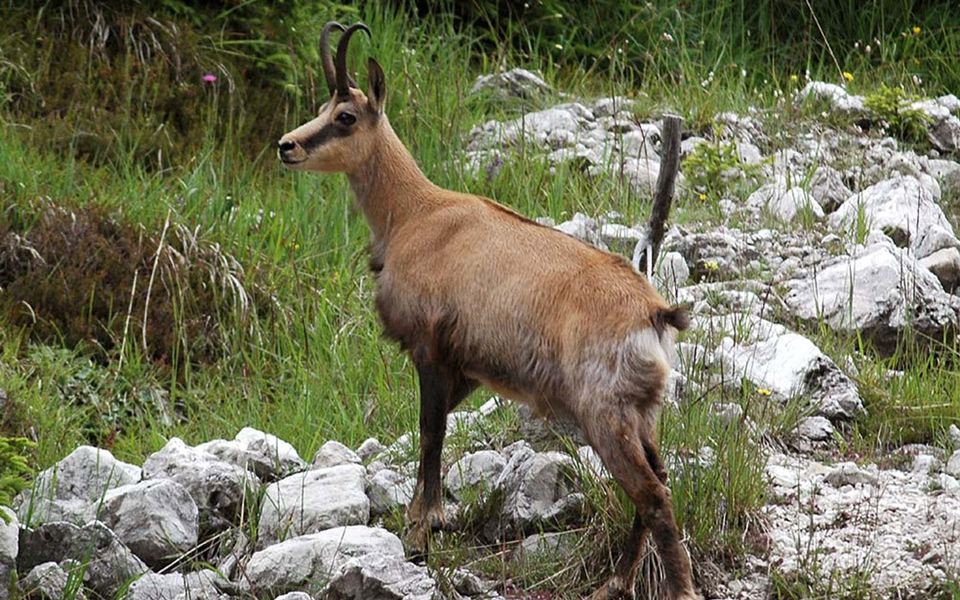Balkan chamois – Rupicapra rupicapra balcanica
Name: Rupicapra rupicapra balcanica – Balkan chamois
Appearance: It is the size of a bigger goat. It can be recognised by its black, slender horns, bended to the back by the top, which both male and female have. The fur is short, brown in the summer, and greyish and thick in the winter. A long dark line stretches along the back. The head is lighter with a dark line under eyes almost to the snout. The legs are long and firm and adapted to the life in mountain cliffs and rocks.
Body length: 110 – 130 cm
Body height:70 – 80 cm
Body weight: 25-55 kg
Nutrition: herbivore
Mating season: November – December
Number of hatchlings: 1-2 (usually 1)
Balkan chamois is one of 7 subspecies of Alpine chamois, that inhabits only the Balkan Peninsula. The number of population is estimated at 2 300 individuals (information from 2006).
The Balkan subspecies of chamois (Rupicapra rupicapra balcanica) differs from the Alpine subspecies (Rupicapra rupicapra alpina) in body height and weight. Balkan subspecies of chamois inhabits habitats where the winters are mild with little snow, and food is abundant and juicy. For these reasons, Balkan chamois is higher and heavier than the Alpine one.
The habitats of Balkan chamois are mountain and high mountain areas from 400 to 3.000 MSL. They inhabit high mountain meadows above the upper forest level, which are followed by the steep rocky slopes and taps where they rest and have protection from predators. Precisely because of the inaccessibility of the terrain, where it moves and stays, the chamois has strong legs adapted to movement on the rocky area, and their muscles are so strong that they bounce a few meters in distance while they can bounce up to two and a half meters high.
Due to specific conditions of their habitat, chamois perform horizontal and vertical migrations in the course of a year. In the winter, when the snow falls, they descend to lower altitude, to parts of habitat overgrown with shrubs and forests and where they have an easier access to food. If the habitat provides sufficient amount of food and refuge from predators and harassment, the size of the habitat of one herd can have 100-300 ha. The group or herd is led by the oldest and most experienced chamois assisted by the guard chamois that warn on danger. There are usually about two dozen of chamois in the herd, only females and young chamois while the males keep to themselves. The males return to the herd only during the mating season that begins in autumn, and November is characteristic for strong fights of males for a female. The connection in the herd, except for that between mothers and hatchlings, is not firm, it is often broken inside it and new communities are formed. This happens especially when young billy goats, in search of new habitats, attract a certain number of young females. In that way, there happens lateral expansion of the population. The chamois are pronouncedly daily animals, that begin their activities in the break of dawn, and end them when the sun goes down. They spend the night in a safe and peaceful place.
In the Dinarides, the greatest threat to the chamois represents poaching, as well as the increased number of predators that feed on them.

